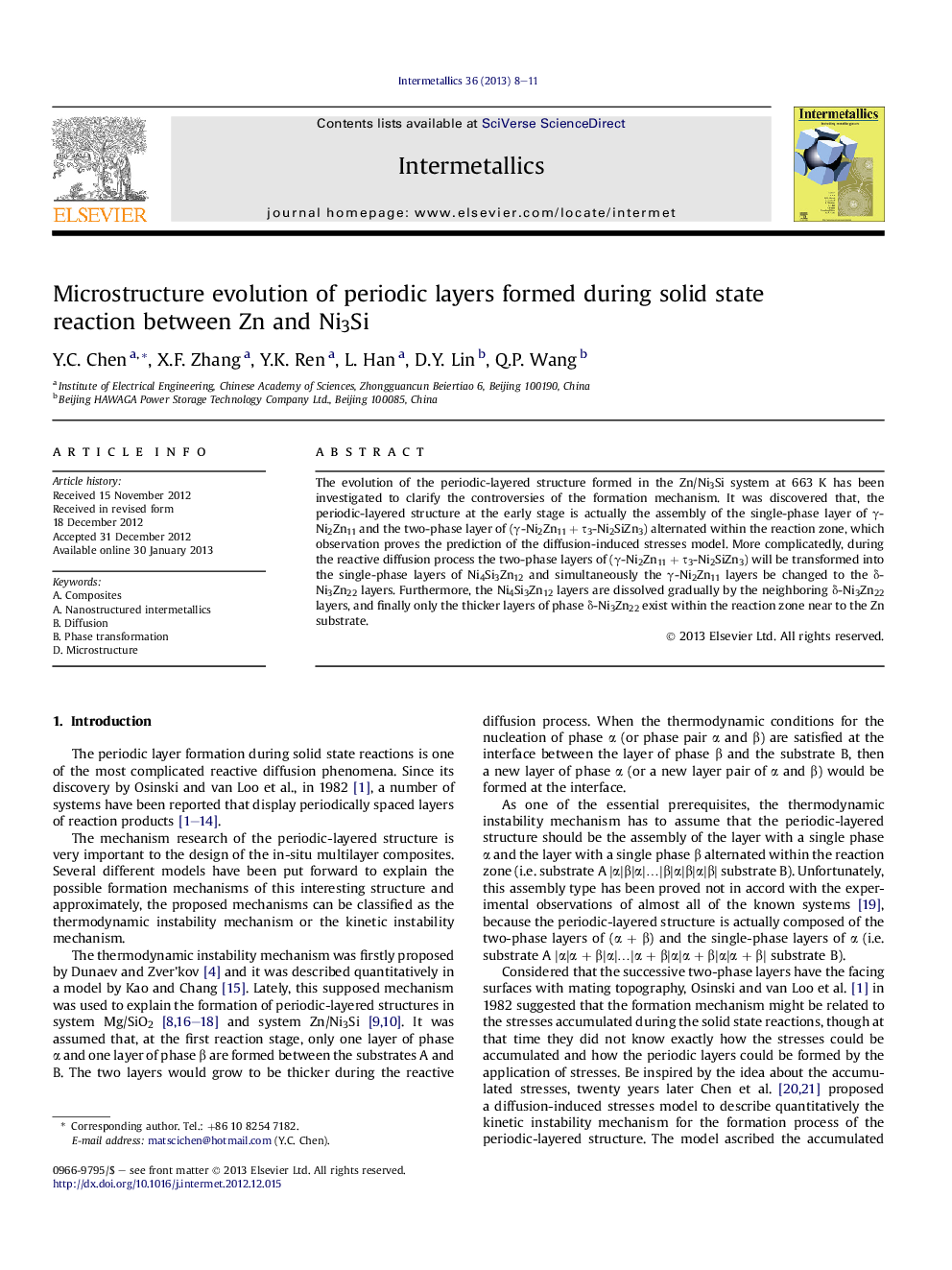| Article ID | Journal | Published Year | Pages | File Type |
|---|---|---|---|---|
| 1600248 | Intermetallics | 2013 | 4 Pages |
The evolution of the periodic-layered structure formed in the Zn/Ni3Si system at 663 K has been investigated to clarify the controversies of the formation mechanism. It was discovered that, the periodic-layered structure at the early stage is actually the assembly of the single-phase layer of γ-Ni2Zn11 and the two-phase layer of (γ-Ni2Zn11 + τ3-Ni2SiZn3) alternated within the reaction zone, which observation proves the prediction of the diffusion-induced stresses model. More complicatedly, during the reactive diffusion process the two-phase layers of (γ-Ni2Zn11 + τ3-Ni2SiZn3) will be transformed into the single-phase layers of Ni4Si3Zn12 and simultaneously the γ-Ni2Zn11 layers be changed to the δ-Ni3Zn22 layers. Furthermore, the Ni4Si3Zn12 layers are dissolved gradually by the neighboring δ-Ni3Zn22 layers, and finally only the thicker layers of phase δ-Ni3Zn22 exist within the reaction zone near to the Zn substrate.
Graphical abstractIt is discovered that the periodic-layered structure at the early stage is actually composed of the single-phase layer of γ-Ni2Zn11 and the two-phase layer of (γ-Ni2Zn11 + τ3-Ni2SiZn3) alternated within the reaction zone. During the reactive diffusion process, the two-phase layer of (γ-Ni2Zn11 + τ3-Ni2SiZn3) will be transformed into the single-phase layer of Ni4Si3Zn12. At the same time, the single-phase layer of γ-Ni2Zn11 is changed gradually from the component of Ni17.0–19.4Si3.0–3.9Zn76.9–79.1 to Ni14.4–16.0Si3.4–4.4Zn80.4–82.0, and finally transformed to the single-phase layer δ-Ni3Zn22 (Ni12.4–12.5Si1.3–2.5Zn85.1–86.2).Figure optionsDownload full-size imageDownload as PowerPoint slideHighlights► The controversies of the formation mechanism have been clarified by the careful investigation of the microstructure evolution. ► The observation results are in accordance with the prediction of the diffusion-induced stresses model. ► A new ternary phase Ni4Si3Zn12 is reported firstly in this paper.
